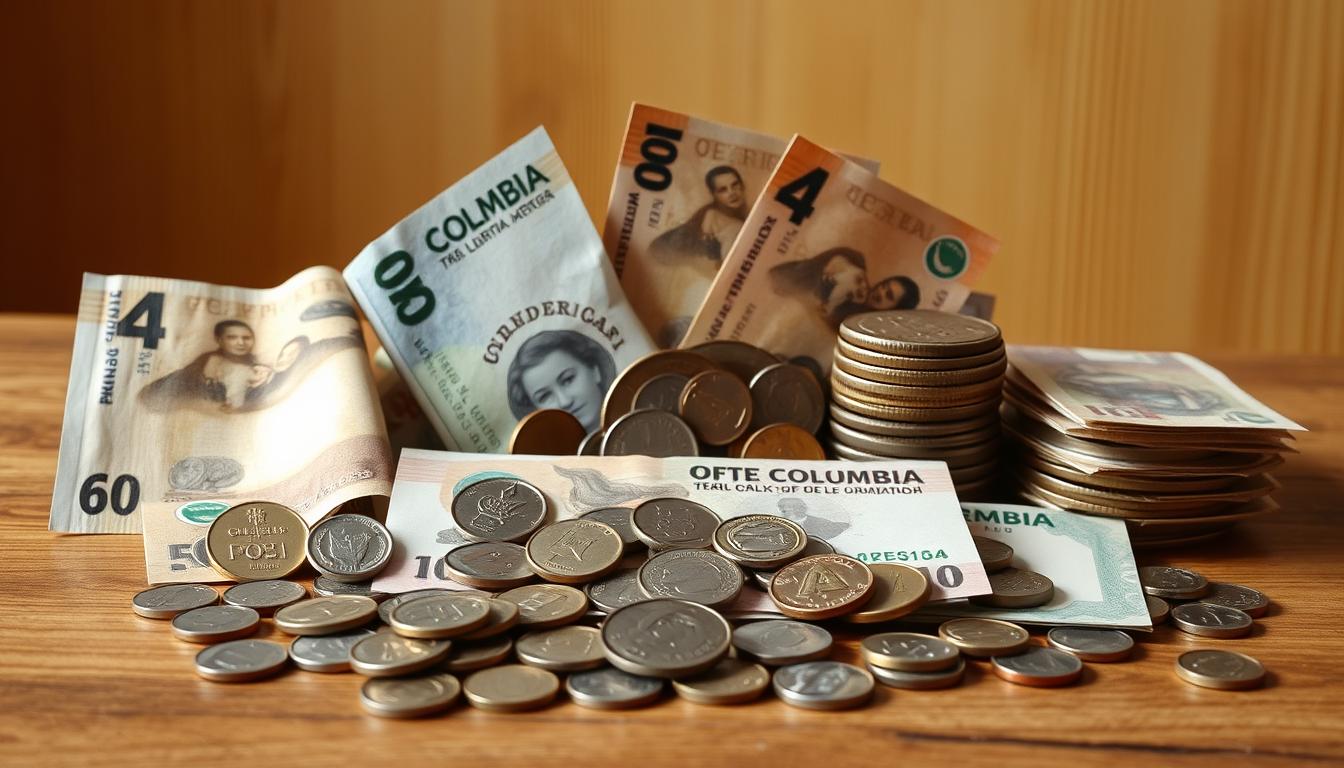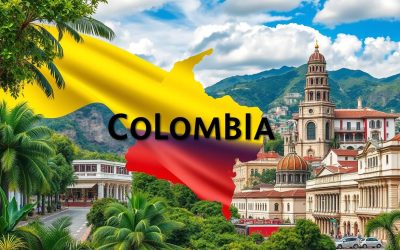Did you know that cash makes up 78.4% of all transactions in Colombia? This surprising fact highlights why it’s essential to understand the local currency and payment methods before your trip. The official currency is the Colombian peso (COP), and knowing how to manage your money can save you time and avoid unnecessary fees.
Exchange rates can vary, so it’s wise to monitor them before converting your dollars. Avoid exchanging cash at airports or hotels, as they often offer poor rates. Instead, consider using a travel card with no foreign transaction fees for convenience and savings.
By planning ahead, you can make the most of your budget and enjoy a hassle-free experience. Whether you’re using cash or cards, understanding the local financial system is key to a smooth journey.
Overview of Colombian Currency
The Colombian peso plays a central role in everyday transactions. Known as COP, it’s the official currency used across the country. Understanding its structure and history can help you navigate payments with ease.
Understanding COP Denominations
The COP comes in both coins and bills. Coins range from 50 to 1,000 pesos, while bills start at 1,000 and go up to 100,000 pesos. Each denomination serves a specific purpose, from small purchases to larger expenses.
For example, a 1,000-peso bill is ideal for quick snacks, while a 50,000-peso note is better for shopping or dining out. Knowing these differences can help you manage your payment options effectively.
The Evolution of the Colombian Peso
The peso has undergone significant changes over the years. Inflation and economic shifts have influenced its value and design. In 2016, the coins received a modern makeover, making them easier to recognize and use.
Today, the COP reflects Colombia’s rich history and economic progress. By understanding its evolution, you can better appreciate the currency and avoid counterfeit bills during your travels.
How to Exchange Money and Understand Rates
Understanding how to exchange money efficiently can make your trip smoother and more cost-effective. One of the most important concepts to grasp is the mid-market rate. This is the benchmark rate used in global currency markets, and it ensures fair exchange without hidden fees.

Before exchanging your money, check live rates on a trusted currency conversion site. This will help you avoid unfavorable rates and save time and money. Always aim to get as close to the mid-market rate as possible.
Mid-Market Rate Insights
The mid-market rate is the fairest exchange rate you can get. It’s the rate banks use when trading currencies among themselves. Many currency exchange services add a markup to this rate, so always compare before committing.
Using a credit card with no foreign transaction fees can also help you avoid extra charges. Just ensure your card uses the mid-market rate for conversions.
Airports vs. City Center Exchange Tips
While exchanging money at airports is convenient, it often comes with higher fees and worse rates. Instead, consider waiting until you reach the city center. Local banks and exchange offices typically offer better deals.
| Location | Exchange Rate | Fees |
|---|---|---|
| Airport | Lower | Higher |
| City Center | Higher | Lower |
By planning ahead and comparing options, you can save both time and money during your travels. Avoid dynamic currency conversion, as it often leads to extra fees. Stick to the local currency for the best results.
Pre-Trip Currency Exchange Benefits
Planning your currency exchange before your trip can save you time and money. Exchanging some cash in advance ensures you’re prepared for immediate expenses upon arrival. This approach also helps you secure a favorable rate and avoid last-minute stress.
One of the key benefits is minimizing uncertainty. By exchanging money ahead of time, you reduce the risk of extra charges or unfavorable rates at your destination. Using established providers or your local bank ensures you get the best deal possible.
Pre-trip exchanges also help you avoid high transaction fees. Many currency services add a markup to the mid-market rate, but planning ahead allows you to compare options and choose the most cost-effective solution. This guide recommends avoiding airport exchanges, as they often offer poor rates.
Another advantage is having enough local cash on hand. This is especially useful for small purchases or places that don’t accept credit cards. By planning ahead, you can ensure a smooth start to your journey without worrying about finding an ATM or exchange office.
Finally, pre-trip exchanges give you peace of mind. Knowing you have local currency ready allows you to focus on enjoying your trip. As this guide suggests, a little preparation goes a long way in making your travels hassle-free.
Navigating Local Payment Methods: Cash, ATM, and Cards
When traveling, understanding local payment options can make your experience smoother and more cost-effective. In many places, ATMs are widely available, but fees and withdrawal limits can vary. Carrying a mix of cash and cards ensures you’re prepared for any situation.
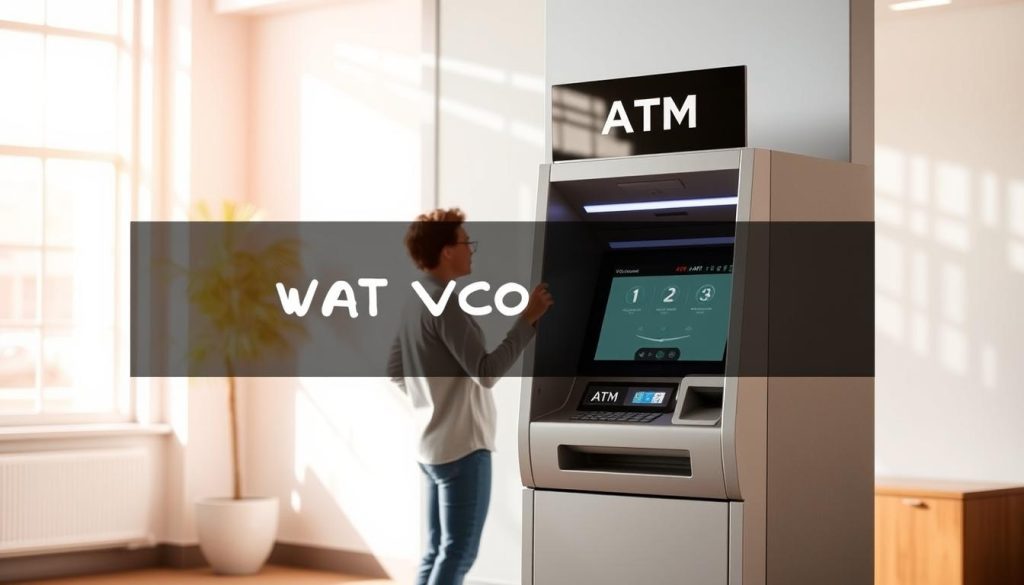
ATM Withdrawals and Associated Fees
Using an ATM is one of the easiest ways to access local currency. However, fees can add up quickly. Some banks charge a flat fee per withdrawal, while others include a percentage of the amount withdrawn. Always check your bank’s policies before traveling.
Daily withdrawal limits also vary by account and location. In touristy areas, limits may be higher, but it’s still wise to withdraw smaller amounts more frequently. This reduces the risk of carrying too much cash at once.
Safety is another important factor. Use ATMs located inside banks or well-lit, secure areas. Avoid using machines in isolated or poorly monitored locations. If possible, withdraw cash during the day to minimize risks.
| ATM Location | Typical Fees | Safety Level |
|---|---|---|
| Bank Branches | Lower | High |
| Tourist Areas | Higher | Medium |
| Remote Areas | Highest | Low |
Using a debit card with low foreign transaction fees can save you money. Some banks offer specialized travel cards that provide competitive exchange rates. These cards often include additional service benefits, such as fraud protection.
Remember, withdrawing cash in the local currency usually offers the best rates. Avoid dynamic currency conversion, as it often leads to extra charges. By planning ahead and understanding your options, you can manage your finances efficiently during your trip.
Using Credit and Debit Cards in Colombia
Using credit and debit cards in Colombia can simplify your transactions, but it’s important to know the best practices. Cards are widely accepted in major cities, making them a convenient way to pay. However, understanding how to use them securely and avoid extra fees is key.
Tips for Secure Card Transactions
When using cards, always keep an eye on your transactions. Notify your bank before traveling to avoid unexpected blocks. This is a simple way to ensure smooth payments during your trip.
Choose ATMs located in secure places, like bank branches or well-lit areas. Avoid using machines in isolated spots, especially at night. This reduces the risk of withdrawal issues or fraud.
Here are some quick tips for safe card use:
- Enable transaction alerts on your phone.
- Use cards with no foreign transaction fees.
- Keep a backup card in case of emergencies.
Managing Installments and Charges
Some vendors in Colombia offer installment plans for purchases. While this can be helpful, it’s important to understand the terms. Always ask about interest rates and payment schedules before agreeing.
Be aware of dynamic currency conversion. This is when a vendor offers to charge you in your home currency. It often comes with higher fees. Stick to the local currency for the best rates.
If you face issues with a transaction, contact your card provider immediately. Most banks offer 24/7 support to resolve problems quickly. This ensures you can continue enjoying your time in the country without stress.
The Rise of Digital Payments and Fintech in Colombia
The rise of fintech solutions is reshaping how people manage their money in Colombia. From mobile wallets to neobanks, digital payments are becoming the norm. This shift is driven by a growing demand for convenience and security.
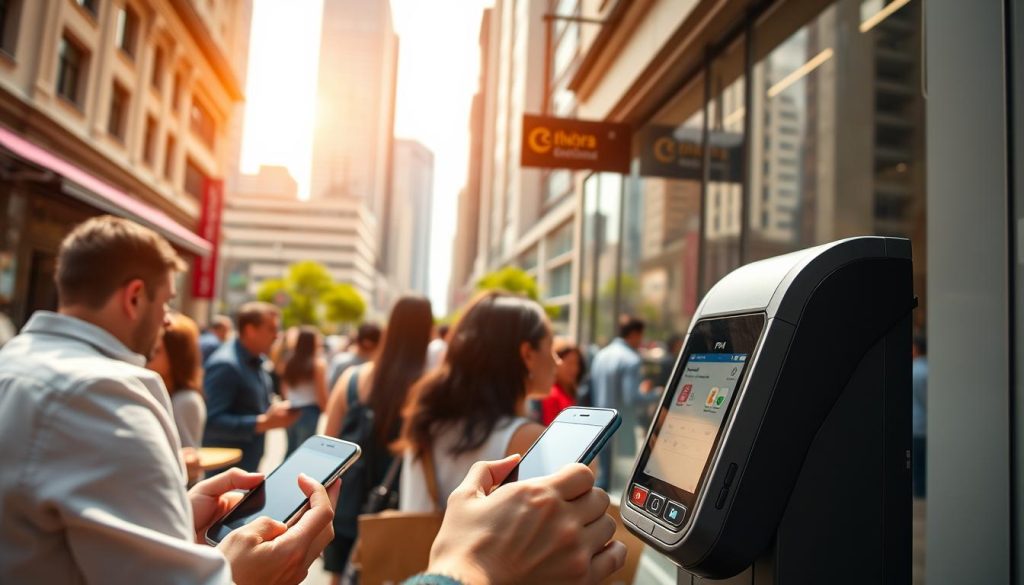
Whether you’re booking a hotel or paying for a meal, understanding these options can make your day easier. Here’s what you need to know about the latest trends in Colombia’s financial landscape.
Growth of Neobanks and Fintech Solutions
Neobanks like Nequi and Daviplata are leading the charge. These platforms offer fee-free services and user-friendly interfaces. They’re perfect for managing expenses without the hassle of traditional banking.
For travelers, these solutions provide a seamless way to handle payments. You can transfer funds, pay bills, and even split costs with friends. It’s a tip worth considering for a smoother trip.
Virtual Wallet Options for Travelers
Virtual wallets are another game-changer. Apps like Movii and Tpaga allow you to store money digitally and make payments with just a few taps. They’re especially useful for small purchases or when you’re on the go.
Many hotels and restaurants now accept these wallets, making them a convenient alternative to cash. Plus, they often come with added security features to protect your funds.
Understanding ACH and Transfiya
ACH Colombia plays a key role in streamlining interbank transfers. This system ensures fast and secure transactions, whether you’re sending money or paying bills. It’s a reliable option for both locals and visitors.
Transfiya, on the other hand, focuses on peer-to-peer transfers. It’s ideal for splitting costs or sending money to friends. Both systems highlight the efficiency of Colombia’s evolving financial infrastructure.
Exploring Consignaciones and Bank Transfers
Bank transfers, known as consignaciones, are a secure and popular way to handle payments in many places. Whether you’re booking a hotel or reserving a tour, this method offers a reliable solution for larger transactions. It’s especially useful for tourists who want to avoid carrying large amounts of cash.
Consignaciones are straightforward and widely accepted. They provide peace of mind by ensuring your payment reaches the intended recipient without delays. Here’s how you can make the most of this payment method during your travels.
How to Make a Consignación for Reservations
To complete a consignación, follow these simple steps:
- Visit a local bank or use their online platform.
- Provide the recipient’s account details, including the bank name and account number.
- Specify the price or amount to be transferred.
- Confirm the transaction and keep the receipt for your records.
Most banks require identification, so bring your passport or another valid ID. This ensures the process is secure and hassle-free.
Consignaciones are a great way to manage payments without worrying about cash. They’re also ideal for situations where a person or business prefers direct transfers. By using this method, you can focus on enjoying your trip while keeping your finances in order.
Securing Your Transactions and Avoiding Extra Fees
Extra fees and counterfeit bills can quickly ruin your travel budget if you’re not careful. Whether you’re at an airport or exploring your destination, being vigilant about your transactions ensures you stay within budget. This section provides practical tips to help you manage your money wisely.
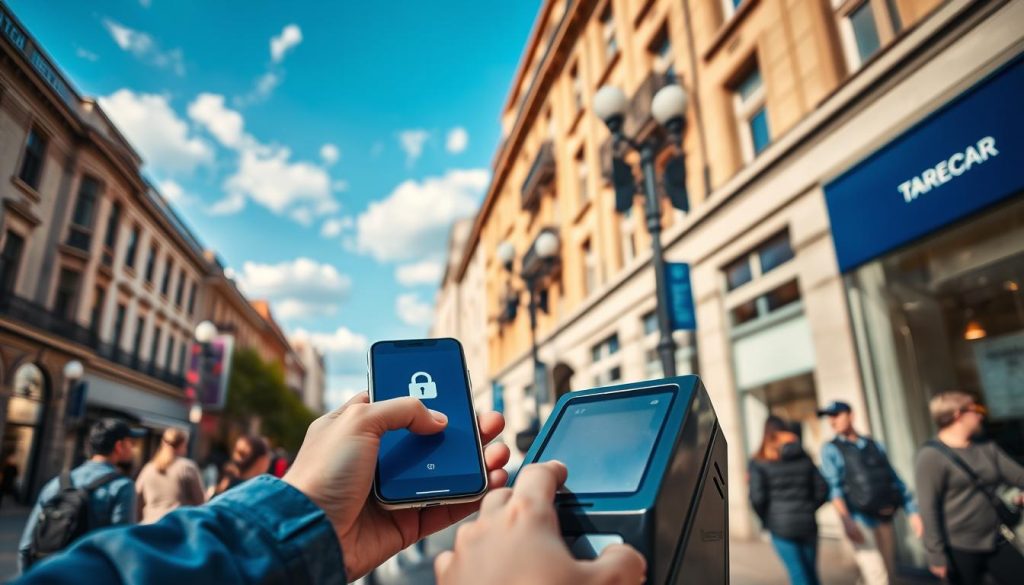
Why Dynamic Currency Conversion Costs You More
Dynamic Currency Conversion (DCC) is a common pitfall for travelers. This is when a vendor offers to charge you in your home currency instead of the local one. While it may seem convenient, it often comes with unfavorable exchange rates and hidden fees.
For example, a $100 purchase could cost you an extra $3-$5 due to DCC. Always choose to pay in the local currency to avoid these unnecessary charges. As one financial expert puts it,
“Avoiding DCC is one of the simplest ways to save money while traveling.”
How to Spot and Avoid Counterfeit Bills
Counterfeit bills can be a problem in busy tourist areas. To protect yourself, always check the security features of the currency. Look for watermarks, holograms, and raised printing. If something feels off, don’t hesitate to ask for a different bill.
Here are some quick tips to avoid counterfeit money:
- Use ATMs located in secure areas like banks.
- Check bills under a UV light if possible.
- Avoid accepting torn or overly worn bills.
By staying alert, you can ensure your transactions are safe and secure. This is especially important in crowded places like airports or popular tourist spots.
| Transaction Type | Typical Fees | How to Avoid |
|---|---|---|
| Dynamic Currency Conversion | 3%-5% | Pay in local currency |
| ATM Withdrawals | $3-$5 | Use bank-affiliated ATMs |
| Credit Card Foreign Fees | 1%-2% | Use no-fee cards |
Managing your money wisely while traveling ensures a stress-free experience. By avoiding extra fees and counterfeit bills, you can focus on enjoying your trip without financial worries.
Local Tips for Payment and Currency Management
Managing your money wisely while traveling ensures a stress-free experience. One of the best ways to do this is by mixing payment methods. Using a combination of cash and cards can help you navigate different spending scenarios and avoid unnecessary fees.
For smaller purchases, cash is often the most convenient option. However, for larger expenses, a debit card or credit card can save you from carrying too much money. This approach also helps you secure better exchange rates and reduce transaction costs.
When to Use Cards vs. Cash
Cards are ideal for hotel bookings, dining, and shopping, especially in urban areas. They offer added security and often come with benefits like fraud protection. On the other hand, cash is perfect for small vendors, public transportation, and tips.
Here are some practical tips to optimize your payments:
- Use a debit card with no foreign transaction fees for ATM withdrawals.
- Carry enough cash for daily expenses but avoid large amounts.
- Always check the cost of dynamic currency conversion before accepting it.
Resolving Common Payment Issues
If your card is declined, first check if your bank has blocked it due to unusual activity. Notify them before your trip to avoid this issue. For insufficient cash, locate a trusted ATM or exchange office to withdraw local currency.
In busy tourist spots, planning your transaction strategy is key. Avoid exchanging money at airports or hotels, as they often charge higher fees. Instead, use local banks or reputable exchange services to get the best rates for the Colombian peso.
By combining cash and cards, you can enjoy greater flexibility and peace of mind during your travels. This approach ensures you’re prepared for any situation while keeping your costs under control.
Colombia: Ultimate Travelers Guide to Currencies & Payments
Choosing the right payment method can make or break your travel experience. Whether you’re exploring a bustling city or a remote area, understanding your options ensures you stay prepared and within budget. Here’s a breakdown of the pros and cons of each method to help you decide what works best for your trip.
Cash: Convenient but Limited
Cash is king for small purchases like snacks, tips, or public transportation. It’s widely accepted, especially in rural areas where digital payments may not be an option. However, carrying too much cash can be risky, and exchange rates at airports or hotels are often unfavorable.
Cards: Secure but Fee-Heavy
Cards are ideal for larger expenses like hotels or dining. They offer added security and often come with fraud protection. However, foreign transaction fees can add up quickly. Using a no-fee card or notifying your bank before your trip can save you money.
Digital Transfers: Modern but Not Universal
Digital payments like mobile wallets are gaining popularity, especially in urban areas. They’re fast, secure, and often fee-free. However, they may not be accepted everywhere, so having a backup option is essential.
Tips for City vs. Remote Areas
In cities, cards and digital payments are your best bet. They’re widely accepted and reduce the need to carry cash. In remote areas, cash is often the only option. Plan ahead by withdrawing enough local currency before heading out.
Essential Insights for Travelers
Here are some key tips to manage your money effectively:
- Use a mix of cash and cards for flexibility.
- Avoid dynamic currency conversion to save on fees.
- Check exchange rates before converting your money.
- Keep a backup card in case of emergencies.
By understanding your payment options, you can enjoy a stress-free trip. Whether you’re staying for a week or a month, these insights will help you make the most of your money.
Conclusion
Exploring a new destination is exciting, but managing your money wisely ensures a smooth experience. By understanding local payment methods and planning ahead, you can avoid unnecessary fees and enjoy your trip to the fullest. Mixing cash and cards offers flexibility, whether you’re paying for a restaurant bill or shopping at local markets.
Choosing a reliable provider for currency exchange or ATM withdrawals can save you money. Always monitor fees and avoid dynamic currency conversion to protect your budget. Carrying some colombian pesos in cash is useful for smaller purchases, especially in areas where cards aren’t accepted.
With these tips, you’re ready to explore confidently, knowing your finances are well-managed. Enjoy every moment of your journey, from bustling cities to serene landscapes, without worrying about money.
The above is subject to change.
Check back often to TRAVEL.COM for the latest travel tips and deals.
Here are some Tours & Sightseeing suggestions that might pique your interests!
